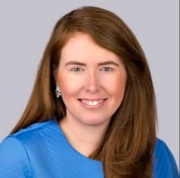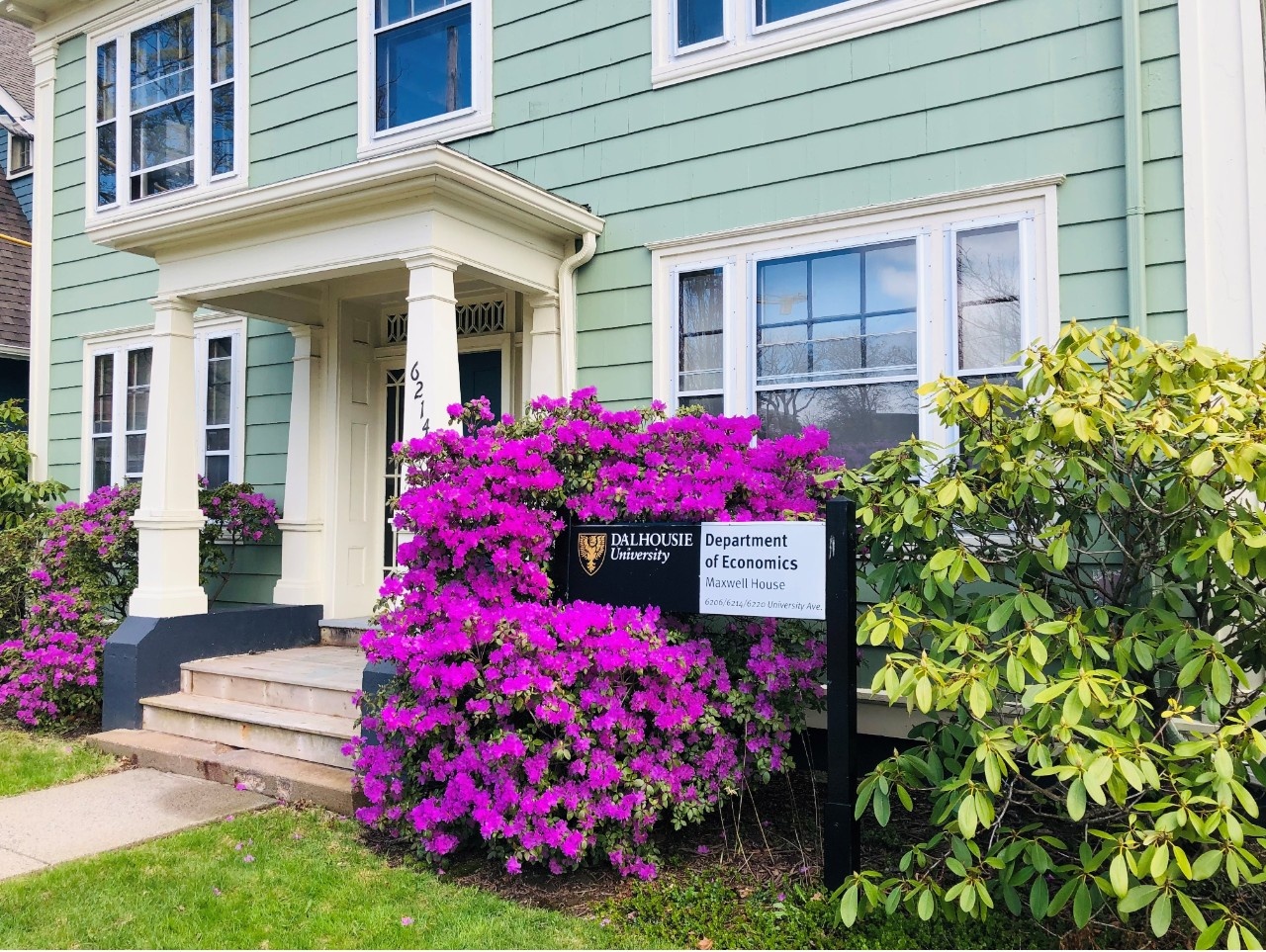Kaylyn Fraser
BA Honours, Economics & French, 2009

I graduated from Dalhousie University in 2009 with a Bachelor of Arts (Honours) in Economics and French.
When I was applying to universities for my undergraduate degree, I already had an intention to study either economics or geography, after they had been my favourite courses during high school. I chose universities to apply to based on my understanding of their economics and geography programmes – and I was particularly familiar with Dalhousie’s as my mother completed a master’s degree in environmental studies and resource economics there in the 1980s. I applied to 13 universities for my undergraduate degree – six in Canada, six in the United Kingdom, and one in Norway – and ultimately decided that Dalhousie was the university for me. As I looked into the required coursework for earth sciences and economics, I also very quickly realised that economics was more for me!
As I organised my course schedule throughout my undergraduate degree, I took as many economics, French and Spanish courses as I could, as I had an ambition to pursue an international career working in an economics or policy role. I particularly enjoyed courses I completed in economic history, health economics, and the economics of disaster relief – in addition to one course taught in the Spanish department on the economic history of Latin America. Beyond these, I also thoroughly enjoyed the Friday afternoon seminars delivered in the Economics Department by visiting lecturers and researchers. Collectively, these events and interests led me to apply for masters’ degrees in development economics and health economics as universities in Canada and abroad.
Following Dalhousie, I moved to Europe, to complete a double-degree masters programme between Sciences Po Paris (The Paris Institute of Political Studies) and the London School of Economics (LSE). My first master’s degree (awarded by Sciences Po) was in Economics and Public Policy, with a focus on development economics and health economics. My second master’s degree (awarded by LSE) was in Economic History, with a focus on the economic history of various emerging markets (e.g., Indian Economic History, African Economic History, etc.) as well as the economic history of epidemics and migration. I originally learned about this double degree masters’ programme from one of the Dalhousie Economics Department guest lectures – when Professor Chris Minns from the LSE delivered a talk.
I completed my masters programme in autumn 2011 and started working for Cambridge Economic Policy Associates (CEPA), a boutique economics, finance and policy consultancy in London, United Kingdom. CEPA works across various areas, and I was fortunate to be able to specialise in emerging markets advisory work, where I supported public and private sector clients in the agriculture, global health, and infrastructure sectors. A large share of my work was for the World Bank Group and various United Nations agencies, which gave me insight into how multilateral organisations work, as well as access to emerging debates and topics in the development finance landscape. One such topic was ‘blended finance’, which grew considerably in visibility and importance in the years leading up to 2015, with the launch of the 2030 Agenda for Sustainable Development and the Sustainable Development Goals (SDGs). For instance, in 2015, the multilateral development banks co-wrote and published a paper called “From Billions to Trillions: Transforming Development Finance”, which put blended finance front and centre in the development finance agenda.
One of my clients while at CEPA was AgDevCo, a specialist impact investor in African agribusinesses. AgDevCo was founded in 2009 as a pioneering response to a severe food security crisis in Africa. African agriculture had long been the recipient of grant funding, but AgDevCo was established to prove that a unique investment approach could catalyse the development of a bankable and commercial agriculture sector across the continent, and in turn reduce a long-running dependency on grant funding. In particular, AgDevCo pioneered a financing instrument called ‘patient capital’ – a type of long-term debt or equity that prioritises sustainable development alongside financial returns.
I left CEPA in 2018 to join AgDevCo as a technical assistance manager and later became the head of its Technical Assistance Facility. I remained based in London, but had the opportunity to work with agribusinesses across sub-Saharan Africa to strengthen their engagement with smallholder farmers through outgrower and extension programmes. Blended finance is central to AgDevCo’s business model – AgDevCo itself is a blended finance vehicle (it is funded by a mix of government funding and investment capital) and it deploys blended finance by offering its investee businesses investment capital integrated with technical assistance. This role allowed me to further my understanding of best practice, well-governed blended finance.
In 2021, I joined the European Bank for Reconstruction and Development (EBRD) to lead its first-ever specialist blended finance function. The EBRD is a multilateral development bank, established in 1991, to foster what it calls ‘transition impact’, which involves supporting economies to become more competitive, well-governed, green, inclusive, resilient, and integrated. Today, the EBRD works in more than 40 countries from the Southern and Eastern Mediterranean, to Central and Eastern Europe, to Central Asia. The EBRD will soon expand to sub-Saharan Africa. Blended finance enables the EBRD and other multilateral development banks to take on more risk, unlock more impact, and mobilise more private capital towards the SDGs. For instance, blended finance has been critical to enable EBRD to continue investing at scale in Ukraine, following Russia’s invasion of the country in February 2022.
Each role I have had to date has been challenging and rewarding in its own respect. Each role has also been quite different one to the next, which has allowed me to work in a wide range of contexts, with people from a wide range of cultural and professional backgrounds, and on a large diversity of projects. The common thread throughout each of these roles has been blended finance – a topic rooted in microeconomics. In its most basic sense, blended finance is about mixing different types of money (public subsidy and private capital) to influence decisions for good (impact).
As an individual, I am very passionate about the catalytic potential of blended finance to meet many of the world’s greatest challenges. For instance, the financing needs of emerging markets to achieve a zero-carbon transition by 2030 is in the trillions of dollars. The scale of this financing need means that the bulk of the capital must come from the private sector. However, private capital is traditionally risk adverse. Blended finance is key to rebalancing risks and returns, to mobilise this private capital at scale.
I am very grateful to Dalhousie University, and particularly the Economics Department, for the solid foundation it provided me in Economics – and especially microeconomics and development economics. I continue to feel a strong affinity with the Department. My career to date feels both very aligned to what I hoped my undergraduate degree would help me to achieve, while also surprising – I didn’t expect to be living abroad, working in a fairly finance-heavy role, in a large development bank. I very much recognise that the people-centric, high-quality education I had at Dalhousie was instrumental in my career path and professional development. I remain very grateful for all the support and teaching I received from my excellent professors – including Dr Teresa Cyrus, Dr Melvin Cross, Dr Talan Iscan, Dr Ian McAllister, Dr Lars Osberg, Dr Shelley Phipps, Dr Kuan Xu, and many others.
